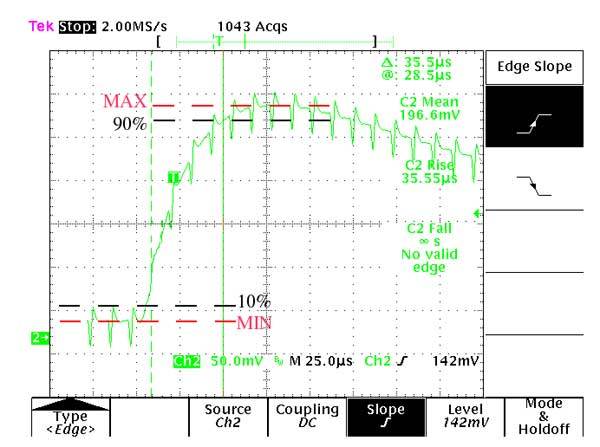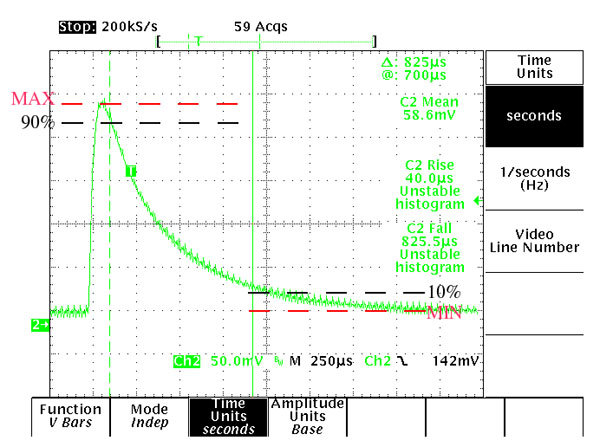THG Unveils New LCD Benchmarking Method
Second Observation: Rise Time
In the absence of other standards, we use rise time from 10% to 90%. For my part, and despite the low opinion one might have of this standard, it is a valid measurement. Rise time from 10% to 90% is used successfully everywhere for characterizing electronic components. Also, the pixels of a TFT are above all first-order systems, and I have never observed oscillation or even overshoot. Consequently, rise time from 10% to 90% appears seems to be quite a valid measurement.
We observe, for example, for the CRT:
A measured rise time of 35 µs - that is, a response that's about 400 times faster than that of an average TFT. Of course it is a delicate matter to speak of rise time for a CRT, since once the beam has passed over the pixel, the latter begins to fade progressively. Thus a permanent state, and consequently a rise time, can't really be defined.
If you look at the previous graph more closely, you can even detect the illumination of the successive pixels. The distance between two pixels works out to the horizontal refresh rate confirmed by the monitor's own OSD.
Third Observation: Fall Time
We use the same method here as for rise time. In fact, the human eye is more sensitive to fall time than to rise time. A white object that leaves a "trail" will be more inconvenient than a white object that takes time to illuminate when moving. Based on our observations, certain manufacturers don't hesitate to "pre-load" their pixels at a lower value before any color change. By doing this, they reduce fall time, but to the detriment of rise time.
On our CRT, the fall time, in fact, corresponds to the display's remanence.
Get Tom's Hardware's best news and in-depth reviews, straight to your inbox.
Here we measure 825 µs, which remains beyond the capabilities of the best TFT panels. All we have to do is add the rise time and the fall time to obtain the latency time:
Tl = Tf + Tr = 860 µs
Current page: Second Observation: Rise Time
Prev Page The System In Use - Example: CRT Monitor Next Page The System In Use - Example: Hercules Prophetview 920 Pro
